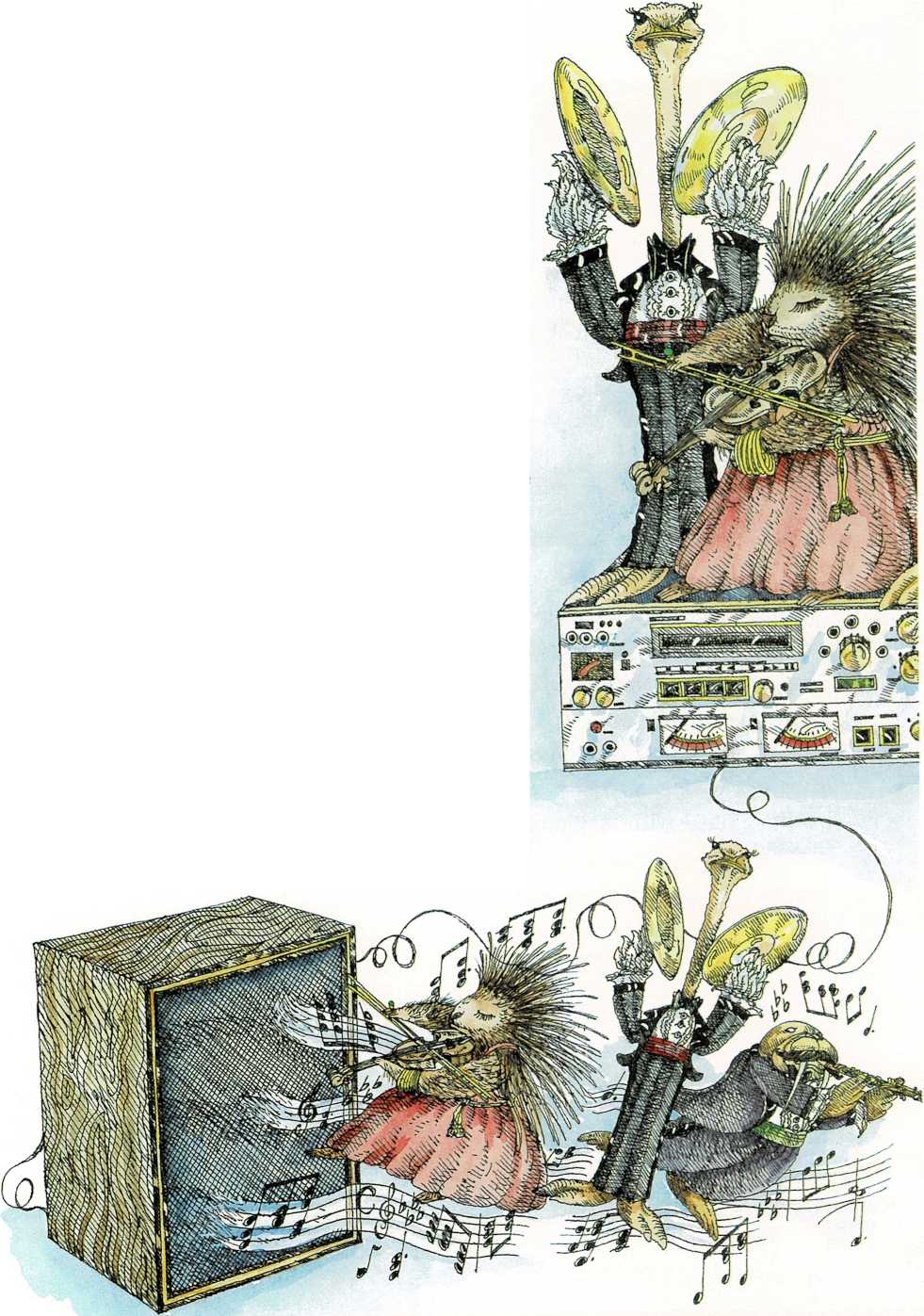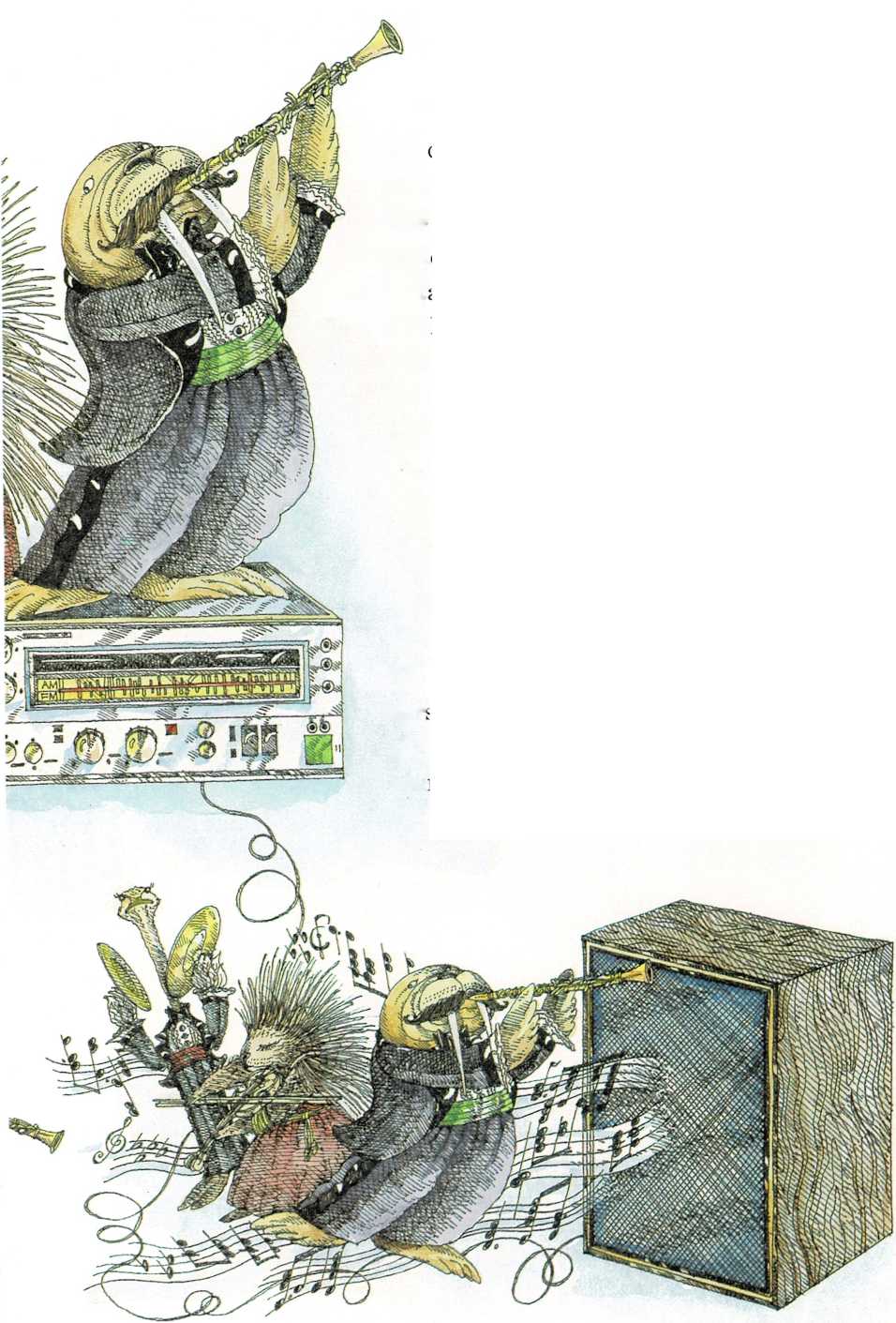
“Seeing” with your ears
When a friend calls your name across the playground, do you know which
way to look? Usually you do—your ears tell you.
The outer part of your ear traps sound waves and funnels them into your
ear. There the sound waves hit a thin, stretchy part called the eardrum.
They make the eardrum vibrate and send a message to a nerve deep in your
ear. The message travels up the nerve to your brain—and you hear.
Your ears are about six inches apart, so each ear hears sounds in a
slightly different way. The ear that is closer to a sound hears it a
little sooner and a little more loudly. It receives each part of the
wave just a little before the other ear does.
These differences are very tiny—but they are big enough to tell you
where the sounds
Hear All About It \|

are coming from. Your ears use the differences to make a near-and-far
“picture” of what you hear, the same way your eyes make a near-and-far
picture of what you see.
Radios, record players, and tape players can help your ears make
“pictures” with a special kind of sound—stereophonic
[(stehr]{.smallcaps} ee uh [fahn]{.smallcaps} ihk) sound. A stereophonic
radio broadcast, record, or tape recording is made with two or more
microphones that are set far apart. Each microphone picks up the sounds
in a slightly different way.
When the broadcast, record, or tape recording is played on a stereo set,
different sounds go to each speaker. You hear slightly different sounds
with each ear. Then your ears give you a “picture” of a room full of
musical instruments. They tell you that the sounds are coming from the
left and the right, from nearer and farther away.

